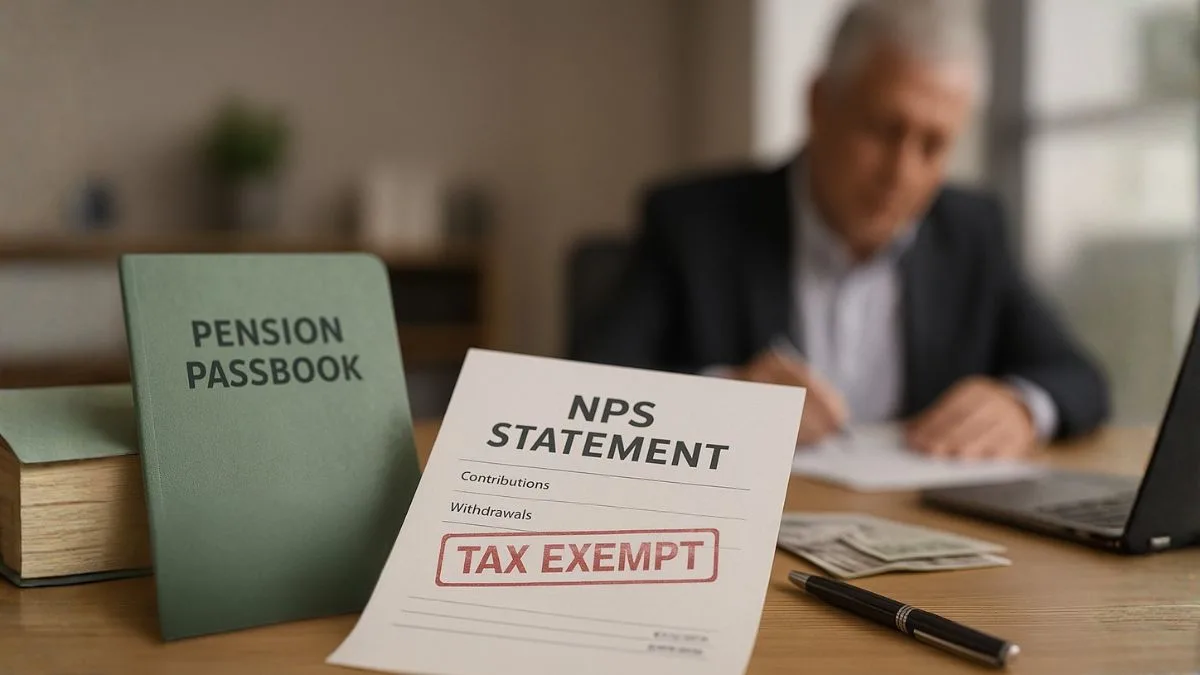
Education is one of the biggest financial goals for most Indian families. From kindergarten to college, tuition costs keep rising faster than income. Thankfully, the Income Tax Act offers a small but meaningful breather through Section 80C — a deduction for tuition fees.
It’s not the largest deduction out there, but when used wisely, it can trim your tax bill & free up cash for other essentials.
What Is the Tuition Fees Income Tax Deduction?
Simply put, this benefit lets you claim a deduction for the tuition fees paid for your child’s full-time education.
Under Section 80C, you can claim up to ₹1.5 lakh per financial year (including other 80C investments like PPF, ELSS, or life insurance). This applies to both salaried & self-employed taxpayers — as long as the school or college is based in India and officially recognized.
That means if you’re paying tuition fees for your kids, part of it can directly lower your taxable income. No complicated paperwork — just proof of payment & eligibility.
Who Can Claim the Deduction
Only individual taxpayers — that is, parents or legal guardians — can claim this deduction.
- Each parent can claim fees for up to two children.
- Both mother & father can claim separately if they each pay the fees for different children."
- Companies, HUFs, or partnerships are not eligible.
In real terms, a working couple could together claim deductions for four children — within the ₹1.5 lakh annual limit per person.
Also Read: Tax-Free Allowances for Work-Related Expenses
Which Institutions Qualify
The deduction applies only when the tuition is paid to:
- A school, college, or university situated in India.
- Institutions recognized by the Central or State Government or local authority.
- Courses that are full-time — from pre-nursery to post-graduation.
Payments to coaching centers, online tutorials, or foreign universities don’t count. Neither do donations, building funds, or capitation fees. Keep that distinction clear — it’s where most parents go wrong.
How Much You Can Claim
All Section 80C deductions combined — tuition fees, insurance premiums, PPF, etc. — cannot exceed ₹1.5 lakh in a year.
Here’s how it works in practice:
Suppose you pay ₹65,000 annually for each of two children. You can claim ₹1.3 lakh in tuition deduction. The remaining ₹20,000 room can go toward your PPF or other 80C investments.
If your fees exceed ₹1.5 lakh, you’ll still get the full benefit — but only up to that limit.
Example: How It Looks in Numbers
Let’s make this simple.
Meera, a salaried employee, pays ₹60,000 per year for her son & ₹55,000 for her daughter.
She can claim ₹1.15 lakh under Section 80C for tuition fees alone.
If she also invests ₹35,000 in ELSS, that brings her total to ₹1.5 lakh — hitting the full deduction cap for the year.
Expenses That Don’t Qualify
Many parents assume every school-related payment qualifies. Unfortunately, it doesn’t.
Here’s what does not count as tuition fees under Section 80C:
- Donations or capitation fees.
- Development or building fund contributions.
- Hostel, transport, and mess charges.
- Fees paid for part-time or correspondence courses."
- Coaching or private tuition fees.
Only the pure tuition amount printed on the official receipt qualifies. Always double-check it before claiming.
Also Read: Tax-Free Allowances Explained for Employees
Pre-Nursery and Play School — Are They Covered?
Yes, they are. Fees for pre-nursery, nursery, & kindergarten are also eligible — as long as the institution is recognized by an educational authority.
This helps young parents who begin schooling early but still want to enjoy tax relief.
How to Claim in Your ITR
If you’re a salaried employee, you can declare tuition fees in Form 12BB & submit receipts to your employer. They’ll adjust your TDS accordingly.
If you missed declaring it during the year, don’t worry. You can still claim it while filing your Income Tax Return (ITR) before the due date.
Keep digital copies of receipts — it’s your best defense if the return is ever reviewed.
Documents to Keep Handy
While claiming, ensure you have:
- The fee receipts issued by the school or college.
- The name & address of the institution (PAN, if available).
- Proof of payment — bank transfer, cheque, or online record.
- The child’s birth certificate or school ID showing relationship to the taxpayer.
Good documentation often decides whether a deduction is accepted without queries.
Dual Tax Advantage for Working Couples
Here’s something many families miss:
If both parents are working & each pays tuition for different children, both can claim ₹1.5 lakh separately.
That effectively doubles the family’s benefit while staying fully within the law. Smart coordination here can save you thousands.
Planning Tip from a CA
Section 80C isn’t just about claiming deductions — it’s about timing & structure.
If your tuition payments are due in April, see if prepaying before March helps you lock in the deduction for the current year.
And combine tuition fees with long-term investments like ELSS or PPF — this way, your education expenses become part of a broader financial strategy.
Small moves, big impact.
Also Read: Tax-Free Benefits from Provident Funds and Sukanya Samriddhi Account
80C vs. 10(14): The Common Confusion
Parents often mix up Section 80C with Section 10(14).
Here’s the difference:
- Section 80C gives you a deduction (reducing taxable income).
- Section 10(14) provides an exemption for allowances such as children’s education or hostel allowance from your salary.
The tuition fee claim is purely a deduction, not an allowance.
Key Takeaways
- Deduction available under Section 80C for tuition fees of up to two children.
- Maximum limit: ₹1.5 lakh per year, including all other 80C investments.
- Applies to full-time courses in recognized Indian institutions.
- Both parents can claim separately for different children.
- Keep all receipts & digital proof for easy verification.
It’s a simple benefit — but only if claimed carefully.
Conclusion
Education expenses are rising faster than inflation, but smart tax planning can ease that load. The tuition fees income tax section under Section 80C is a small yet powerful way to reward parents who prioritize their child’s education. It’s one of those deductions that often goes unnoticed — until a good CA reminds you to claim it. So, check your receipts, keep your paperwork ready, and make sure you get the benefit you’ve earned.
Still unsure how to claim tuition fee deductions correctly?
👉 Visit CallMyCA.com — our tax experts can guide you step-by-step through Section 80C claims, structure your investments smartly, & help you save more while staying 100% compliant.
Because when it comes to your child’s education, every rupee saved counts.










